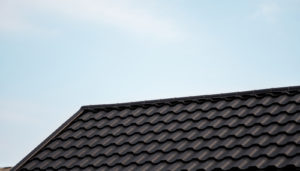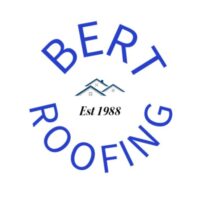 Are you getting ready to have a metal roof installed on your home? If so, it’s important to understand how to properly maintain the structure to get the most out of your new roof. While metal roofing is known for both its durability and longevity, it still requires some maintenance actions to keep it in peak condition. Below, the experts at Bert Roofing explain what you need to do to properly maintain a metal roof.
Are you getting ready to have a metal roof installed on your home? If so, it’s important to understand how to properly maintain the structure to get the most out of your new roof. While metal roofing is known for both its durability and longevity, it still requires some maintenance actions to keep it in peak condition. Below, the experts at Bert Roofing explain what you need to do to properly maintain a metal roof.
Keep Debris Accumulation to a Minimum
Although metal roofing is quite resilient, it’s not totally immune to deterioration. If you allow debris to sit on your roof, it can cause staining or even minor deterioration over time. Of course, this depends heavily on the quality of the materials you select, but to stay on the safe side, it’s best to remove debris as soon as you notice it collecting.
You can use a push broom, a leaf blower, or even a garden hose to clear debris from a metal roof, but make sure you cover your gutters first, or you’ll create extra work for yourself.
Maintain Clean Gutters
Maintaining clean gutters allows for efficient water drainage from your roof. But when your gutters become clogged with debris, water can back up inside them and damage the fascia along the edge of your roof. Ideally, you should inspect your gutters for debris after every severe storm and clean them at least once per year, preferably twice.
Inspect for Loose Fasteners
Fasteners serve a critical purpose: They attach the metal roofing to the frame of your house. If the fasteners become loose over time, they can allow wind and water to penetrate beneath the roof, which can result in significant structural damage. To keep your roof in peak condition, you should inspect for fastener wear at least twice per year and after periods of high winds. If you locate any loose components, replace them promptly.
Periodically Check Boots and Sealants
If your metal roof has silicone sealants and boots around the plumbing vents, you’ll need to inspect them on an annual basis. Environmental exposure can deteriorate silicone over time, which makes periodic inspections essential to avoiding roof leaks.
If you’re unsure what to look for in terms of damage, it’s best to contact a reputable roofing company to schedule an inspection. If the professionals locate any damaged components, they can advise on the best course of action to remedy the problem and prevent ongoing deterioration.
Perform a Roof Inspection After Inclement Weather Events
Although metal roofing is incredibly durable, it can incur minor damage during severe weather events. After high winds and hail storms, you’ll need to inspect the roof for signs of damage, including:
- Damaged sheet metal trim
- Penetration of the metal surface coating
- Loose or damaged roof flashings and fasteners
- Loose or missing trim
- Dents or other forms of damage from hail, falling tree limbs, and other windblown, outdoor debris
Prevent Incompatible Metals From Contacting Your Roof
Although metal roofing typically contains a specialty coating designed to prevent corrosion, allowing dissimilar metals to contact the roof can initiate a process known as electrolysis. This is the same process that causes copper plumbing to turn green when it comes into contact with steel.
To protect the metal against the corrosion, make sure any metal objects that come into contact with your roof are compatible with the type of metal it’s constructed from. These include any satellites you may want to install, as well as your gutters.
Avoid Walking on a Metal Roof
While a metal roof is more durable than just about any other roofing material, it’s not impervious to damage under duress. This is why it’s so important to avoid walking on a metal roof. Just the weight of your body and the pressure points beneath your feet can cause the metal to bend or even give way, depending on its quality.
While some manufacturers give their metal roofing components a dent-free guarantee, it’s best to avoid placing too much pressure on a metal roof, just to be safe. If you must walk on the roof, make sure you know the proper way to do it. Look for the flat part of each panel and try to stick to those areas. Roof joists or purlins provide additional support for the roof, and they sit beneath the flat portion of the panels.
Keep in mind, though, that the architectural style of your roof may feature a different support system. Before you walk on the roof, it’s best to have a professional assess its design and structure to locate the areas with the best support.
If you’re considering installing a metal roof on your home, get in touch with our team at Bert Roofing to discuss your options. Since 1988, we’ve installed over 33,000 roofs in the DFW metro area, and our number one goal is your complete satisfaction. To request a free quote or learn more about our services, give us a call today at (214) 321-9341.
